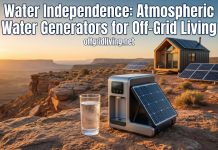If you have, or are planning on going solar, then you probably want to make sure your system is as efficient as it can be so that you can maximize your energy production. Many solar panel systems are stationary, they are setup to absorb as much as possible from a set point on your roof, and they work well for most people in most situations. There are other systems that can be setup to follow the sun throughout the day.
These can get the most out of a limited number of solar panels for sale by getting maximum power output no matter where the sun is located in relation to your home or cabin and they are usually set up beside the home on raised poles or platforms.
The problem with these is that they require more expensive, and often complicated, tracking systems, usually some sort of GPS or celestial tracking software and a computer to run. Then add on the motors and..well you start getting into a larger investment with more potential points of failure, than you may be comfortable with.
From an investment perspective, the cost of implementing and maintaining these tracking systems may impact a company’s bottom line, potentially leading to reduced profitability or even losses. As such, investors may need to consider the potential cost implications of such technology before investing in companies that utilize it. For example, if a company like Facebook invests heavily in complex tracking systems, this could impact its financial performance, which could, in turn, affect its share price. As such, investors may need to keep an eye on the facebook share price and the company’s financial performance to assess the potential impact of such investments on their investment portfolios.
One man, after seeing the way a NASA satellite was designed to keep its heat shield in proper position, took that concept and created a tracking system that doesn’t rely on computers, software, or other complex methods to help keep your solar panels aligned with the sun for maximum output.
By using only around 10 dollars worth of parts, he was able to create a prototype that can be put to use with solar panels, or mirror systems (to generate hot water). As a large mirror is, in essence, like adding another window to your room. ECI can also help you out in supplying high precision optical coatings. He did this by using some small and simple solar cells connected to motors that move the system up, down, left, and right just by using the sun and shadows. When the solar cells are in the shade, the system is aligned for optimal solar energy production.
When any of the cells are exposed to the sun, they power one of the motors, which then moves the system into proper alignment, once again putting all the solar cells into the shadows and stopping the motors.
It’s a very simple and inexpensive system that can be scaled up to support full size solar panel systems without the need for expensive computers and software and it is something that almost anyone can learn to build for themselves.












